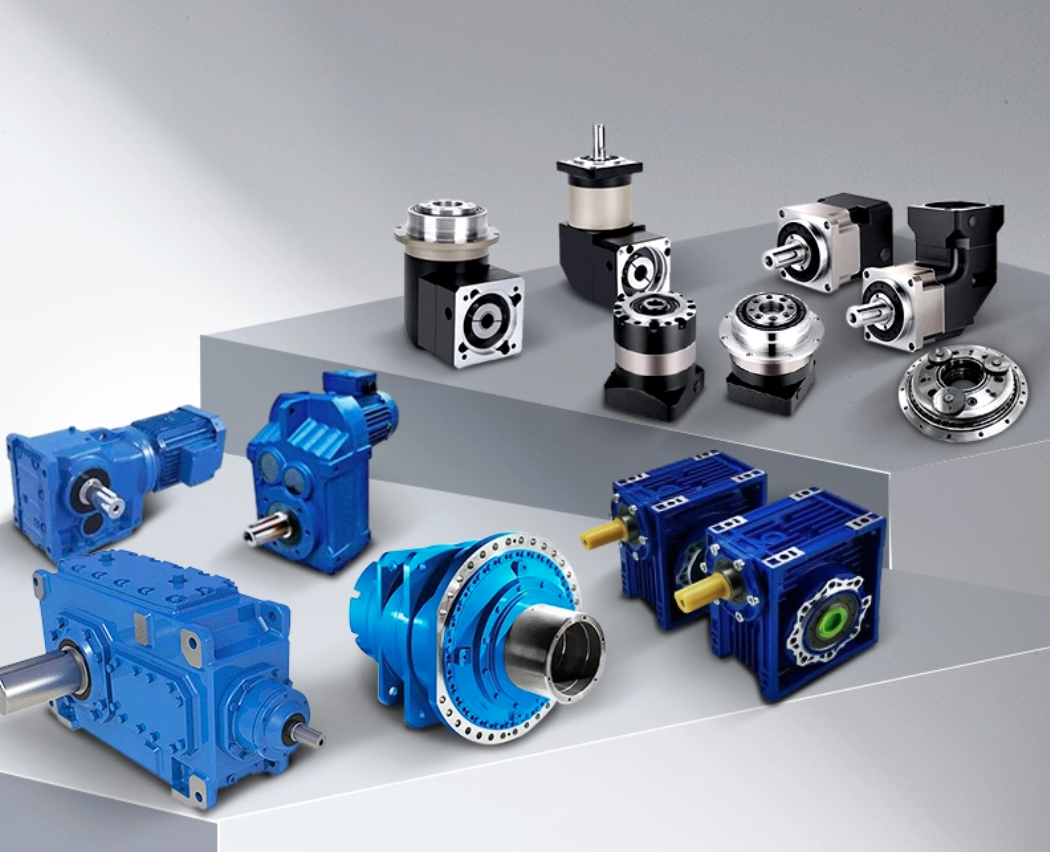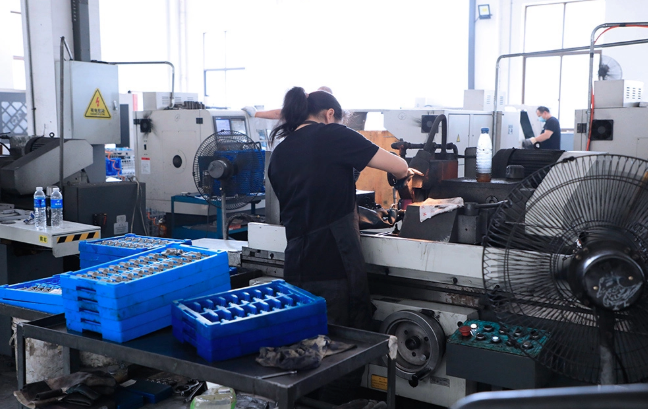- All
- Product Name
- Product Keyword
- Product Model
- Product Summary
- Product Description
- Multi Field Search


Views: 0 Author: Site Editor Publish Time: 2025-09-22 Origin: Site










Electric motors are the backbone of industrial machinery, home appliances, and automated systems. Choosing the right motor can influence efficiency, performance, and long-term operational costs. Among AC motors, two main types dominate: synchronous motors and asynchronous (induction) motors. They may look similar, but their operations and applications are quite different. This article explores the key differences between synchronous and asynchronous motors, how they work, their advantages, and the best use cases for each type.

A synchronous motor is an AC motor that rotates at the same speed as the stator’s magnetic field. It maintains precise timing because the rotor and stator fields lock in, eliminating slip.
The stator produces a rotating magnetic field when AC power is applied. The rotor has either permanent magnets or is energized by a DC supply. The rotor aligns with the stator’s field and rotates synchronously. A damper winding helps start the motor and prevent instability during startup.
A synchronous motor has several key characteristics:
It maintains constant speed regardless of load.
It operates with zero slip.
It can use permanent magnets or external excitation.
It is suitable for high-precision applications.
Synchronous motors offer several advantages:
High efficiency under steady loads.
Precise speed and position control.
They can improve the system power factor.
Synchronous motors are used in a variety of applications, including:
Robotics and automated assembly.
CNC machines and conveyor systems.
Medical instruments and imaging devices.
Clocking and timing systems.
Also called an induction motor, an asynchronous motor works differently. Its rotor always rotates slightly slower than the stator’s magnetic field. This difference is called slip, which induces an electric current in the rotor to produce torque.
The stator generates a rotating magnetic field using AC power. The rotor lags behind, inducing current via electromagnetic induction. This induced current produces torque, driving the rotor. Slip varies depending on load and rotor resistance.
An asynchronous motor has several key characteristics:
The rotor speed is slightly slower than synchronous speed.
It has self-starting capability.
It does not require permanent magnets or external rotor excitation.
It handles variable loads well.
Asynchronous motors offer several advantages:
Simple, rugged design.
Cost-effective and low-maintenance.
Reliable under heavy-duty operation.
Asynchronous motors are used in a variety of applications, including:
Industrial fans, pumps, and compressors.
HVAC systems and water treatment plants.
Household appliances like washing machines.
Office and light industrial equipment.
In a synchronous motor, the stator creates a rotating magnetic field when AC power is applied. The rotor, which can have permanent magnets or be energized by a DC supply, aligns its magnetic field with that of the stator. This alignment causes the motor to rotate at synchronous speed, meaning the rotor and stator fields move in lockstep. A damper winding, often included in the rotor, helps the motor start smoothly and prevents instability during the initial startup phase.
In contrast, an asynchronous motor, also known as an induction motor, operates with a key difference. The stator produces a rotating magnetic field, just like in a synchronous motor. However, the rotor lags behind this field. This lag induces an electric current in the rotor through electromagnetic induction. The induced current, in turn, generates torque, which drives the rotor. As a result, the rotor rotates slightly slower than the stator’s magnetic field, maintaining a condition known as slip. This slip is essential for the motor’s operation and allows it to handle variable loads effectively.
Understanding these key differences helps engineers, technicians, and industrial operators choose the right motor.
| Feature | Synchronous Motor | Asynchronous Motor |
|---|---|---|
| Speed | Exact synchronous speed | Slightly slower than stator field |
| Slip | Zero | Slip is necessary for torque |
| Starting | Needs damper winding or external starter | Self-starting |
| Efficiency | High under steady load | Moderate, varies with load |
| Complexity | Higher, extra components (slip rings, brushes) | Simpler, rugged, fewer parts |
| Cost | Higher upfront and maintenance costs | Lower cost, easy maintenance |
| Load Handling | Best for constant load | Handles fluctuating loads well |
| Control | Excellent for precise speed and position | Limited speed control, depends on slip |
| Applications | Robotics, CNC machines, conveyor belts | Pumps, fans, compressors, appliances |
Synchronous motors maintain exact speed; asynchronous motors vary slightly.
Slip is essential for torque in asynchronous motors, absent in synchronous motors.
Synchronous motors need external starting mechanisms; asynchronous motors start on their own.
Synchronous motors excel in precision and steady efficiency; asynchronous motors excel in durability and simplicity.
The type of load your system experiences is a key factor in motor selection. If your operation runs under a consistent load, a synchronous motor is generally the better choice because it maintains precise speed and efficiency. On the other hand, if your system experiences variable or fluctuating loads, an asynchronous motor is preferable, as it can handle changes in load without losing performance or stability.
Speed control requirements greatly influence the choice between synchronous and asynchronous motors. For applications that demand precise and consistent speed, synchronous motors are ideal due to their ability to rotate exactly with the stator’s magnetic field. If minor speed variations are acceptable, asynchronous motors provide a simple and reliable solution. Additionally, permanent magnet synchronous motors can reduce energy losses at slower speeds, making them more efficient in precision workloads.
When selecting a motor, it’s essential to review specific technical specifications. The power rating should match the mechanical load your system requires. Torque requirements, particularly at startup, may influence the choice, as high-start torque applications often favor induction motors. The service factor is another important consideration, reflecting the motor’s capacity to handle occasional overloads safely without failure.
The operating environment plays a crucial role in motor performance and lifespan. Factors such as ambient temperature, exposure to dust or moisture, and the likelihood of vibration or shocks must be assessed. Synchronous motors may need additional protection or careful installation in harsh environments, while asynchronous motors are generally more rugged and tolerant to challenging conditions.
Maintenance requirements differ between motor types. Induction motors are simpler in design, have fewer components, and generally require low maintenance, making them ideal for operations where downtime must be minimized. Synchronous motors, especially those with permanent magnets or additional excitation systems, may require more careful setup initially, but once running, they often need less daily oversight for continued operation.
Finally, it’s important to consider both the initial investment and long-term costs. Induction motors typically have a lower upfront cost but may experience slightly higher energy losses over time. Synchronous motors often come with a higher initial cost, yet they provide better efficiency and precise speed control in long-term, precision-critical applications. Evaluating total cost of ownership ensures the motor aligns with both your operational and financial goals.
| Motor Type | Typical Applications |
|---|---|
| Synchronous | Robotics, CNC machines, conveyors, medical devices, timers |
| Asynchronous | Pumps, fans, compressors, HVAC, washing machines, industrial machinery |

Slip allows current to be induced in the rotor. Without it, torque cannot develop.
No. At synchronous speed, no current flows in the rotor, so torque disappears.
Yes, especially under steady loads, they avoid slip losses and maintain precise speed.
Synchronous motors excel in automation and precision tasks. Asynchronous motors are ideal for robust, general-purpose machinery.
Choosing the right motor depends on your operation’s needs. Synchronous motors deliver unmatched precision and consistent speed, making them perfect for automation, robotics, and CNC systems. Asynchronous motors, meanwhile, offer durability, simplicity, and cost-effective performance for pumps, fans, and general industrial machinery.
At Qingdao Chinese Science Machinery Co., Ltd., we provide a full range of both synchronous and asynchronous motors designed to meet diverse industrial demands. Explore our solutions to improve efficiency, reduce downtime, and match the exact requirements of your equipment.